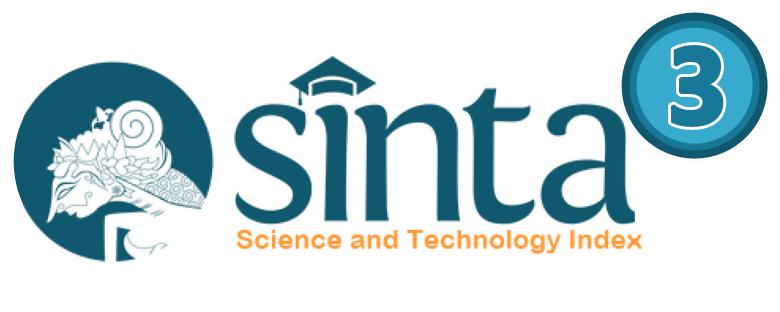Pengaruh Ukuran Perusahaan, Profitabilitas, dan Leverage terhadap Audit Report Lag
Abstract
Full Text:
PDFReferences
Abdelsalam, O., & El‐Masry, A. (2008). The impact of board independence and ownership structure on the timeliness of corporate internet reporting of Irish‐listed companies. Managerial Finance.
Abdillah, M. R., Mardijuwono, A. W., & Habiburrochman, H. (2019). The effect of company characteristics and auditor characteristics to audit report lag. Asian Journal of Accounting Research, 4(1), 129–144.
Abdullah, S.-N. (2006). Board composition, audit committee and timeliness of corporate financial reports in Malaysia. Corporate ownership and control, 4(2), 33–45.
Alfredson, K., Leo, K., Picker, P., Procter, P., Radford, J., & Wise, V. (2006). Applying international financial reporting standards. University Of Tasmania.
Al-Juaidi, O., & Al-Afifi, A. A. M. (2016). The factors affecting timeliness of corporate financial reporting: Empirical evidence from the Palestinian and Amman Stock Exchange. International Journal of Management Sciences and Business Research, 5(10), 123–135.
Alkhatib, K., & Marji, Q. (2012). Audit reports timeliness: Empirical evidence from Jordan. Procedia-Social and Behavioral Sciences, 62, 1342–1349.
Apriyana, N., & Rahmawati, D. (2017). Pengaruh profitabilitas, solvabilitas, ukuran perusahaan, dan ukuran KAP terhadap audit delay pada perusahaan properti dan real estate yang terdaftar di Bursa Efek Indonesia periode 2013-2015. Nominal: Barometer Riset Akuntansi dan Manajemen, 6(2), 108–124.
Bini, L., Giunta, F., & Dainelli, F. (2010). Signalling theory and voluntary disclosure to the financial market-evidence from the profitability indicators published in the annual report. Available at SSRN 1930177.
Brigham, E. F., & Houston, J. F. (2012). Dasar-Dasar Manajemen Keuangan. Salemba Empat.
Carslaw, C. A. P. N., & Kaplan, S. E. (1991). An examination of audit delay: Further evidence from New Zealand. Accounting and business research, 22(85), 21–32.
Chandler, R. A., & Ku Ismail, K. N. I. (2005). Disclosure in the quarterly reports of Malaysian companies, financial reporting, regulation and governance. FRRaG: The electronic journal of the Accounting Standards Interest Group of AFAANZ, 4(1).
Fujianti, L., & Satria, I. (2020). Firm size, profitability, leverage as determinants of audit report lag: Evidence from Indonesia. International Journal of Financial Research, 11(2), 61–67.
Godfrey, J., Hodgson, A., Tarca, A., & Holmes, S. (2010). Accounting Theory (7 ed.). John Wiley & Sons, Inc.
Gujarati, D. N. (2004). Basic Econometrics. The McGraw-Hill, Inc.
Habib, A., Bhuiyan, M. B. U., Huang, H. J., & Miah, M. S. (2019). Determinants of audit report lag: A meta‐analysis. International journal of auditing, 23(1), 20–44.
Hsiao, C. (2014). Analysis of Panel Data (3 ed.). Cambridge University Press.
Ikatan Akuntansi Indonesia. (2019). Modul Level Dasar Akuntansi Keuangan (1 ed.). IAI. http://iaiglobal.or.id/v03/files/modul/ak/
Iyoha, F. O. (2012). Company attributes and the timeliness of financial reporting in Nigeria. Business intelligence journal, 5(1), 41–49.
Lam, N., & Lau, P. (2014). Akuntansi Keuangan : Intermadiate Financial Reporting Jilid I. Salemba Empat.
Lee, H.-Y., & Jahng, G.-J. (2008). Determinants Of Audit Report Lag: Evidence From Korea - An Examination Of Auditor-Related Factors. The Journal of Applied Business Research, 24(2), 27–44.
Leventis, S., & Weetman, P. (2004). Timeliness of financial reporting: applicability of disclosure theories in an emerging capital market. Accounting and Business Research, 34(1), 43–56.
Leventis, S., Weetman, P., & Caramanis, C. (2005). Determinants of audit report lag: Some evidence from the Athens Stock Exchange. International journal of auditing, 9(1), 45–58.
Lubis, R. H. (2017). Cara Mudah Menyusun Laporan Keuangan Perusahaan Jasa. ANDI Yogyakarta.
Özcan, A. (2019). The investigation of factors affecting timeliness of financial statements: Evidence from Turkey. Mehmet Akif Ersoy Üniversitesi İktisadi ve İdari Bilimler Fakültesi Dergisi, 6(2), 485–495.
Rusmin, & Evans, J. (2017). Audit quality and audit report lag: case of Indonesian listed companies. Asian Review of Accounting, 25(2), 191–210.
Widarjono, A. (2005). Ekonometrika: Teori dan Aplikasi. EKONISIA.
Widhiasari, N. M. S., & Budiartha, I. K. (2016). Pengaruh Umur Perusahaan, Ukuran Perusahaan, Reputasi Auditor, Dan Pergantian Auditor Terhadap Audit Report Lag. E-Jurnal Akuntansi, 15(1), 200–228.
Zeghal, D. (1984). Timeliness of accounting reports and their informational content on the capital market. Journal of Business Finance & Accounting, 11(3), 367–380.
DOI: http://dx.doi.org/10.24036/jmpe.v6i3.15024


